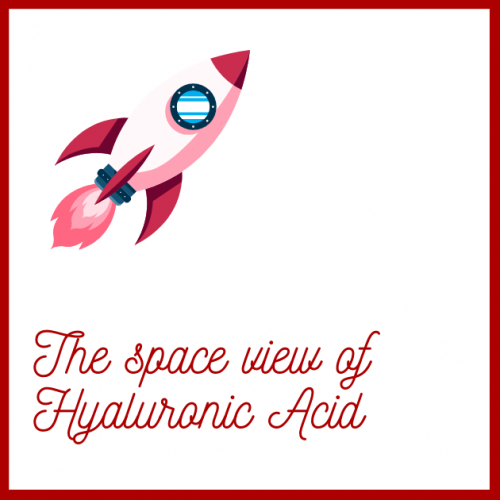I am going to start looking at Hyaluronic Acid (HA) in great depth. Before that, I wanted to summarise my current understanding and build on this knowledge.
A quick look at Sephora and cultbeauty, show an overwhelming number of products contain Hyaluronic Acid in different variants.
As I write this blog, I am getting palpitations because I have a FOMO.
My twopence on HA is this:
1) HA naturally exists in multiple sites in the human body, including the skin, eyes and joints. As a gel between joints, HA is quite viscose. In our eyes and skin, HA exists in a different form. Therefore, HA has excellent flexibility in its molecular arrangement.
2) The chemical structure of HA allows it to form many hydrogen bonds with water. Therefore, volumetrically speaking it is a tiny dot in a lake of water. 1g of hyaluronic acid can hold 6 litres of water, and the volume of the existing 1g is small compared to the entire structure of water + hyaluronic acid.
Imagined chemical structure of Hyaluronic Acid

Red dot is hyaluronic acid surrounded by water, in a spread out matrix structure3) More than 50% of the hyaluronic acid that exists in the body is present in the skin. The turnover of hyaluronic acid in the skin is about half a day.
4) In the skin, HA is present in the epidermis and dermis.
- In the epidermis its also found in the topmost layer of the skin, the stratum corneum.
- In the dermis, it’s the matrix-like structure that holds collagen.
5) With age, HA levels in the skin start to diminish, resulting in wrinkles. HA fillers fill out the gaps left by the reduced quantities of HA, but albeit are a temporary solution requiring top-ups every few months. This depends on formulation and
6) Within products, depending on the molecular size HA in question, the HA can be Low Molecular Weight (LMW) or High Molecular Weight (HMW) HA.
HMW HA cannot penetrate the skin barrier – they are too large. Instead, HMW HA sits on top of the skin: it acts as a humectant (attracts water) and therefore is an excellent moisturiser. Its effects are temporary and I cannot emphasise this point enough.
LMW HA can penetrate the epidermis, but it is not clear whether it can or does reach the dermis. In the dermis, its turnover is longer than in the topmost layer of the skin.
What the big question for me is….
The value for money proposition of Hyaluronic Acid compositions depends on the answer to this question. If topically applied HA cannot penetrate the epidermis to reach the dermis or at least reside in the epidermis for more than half a day, then what is the point of a £500 bottle of HA?
